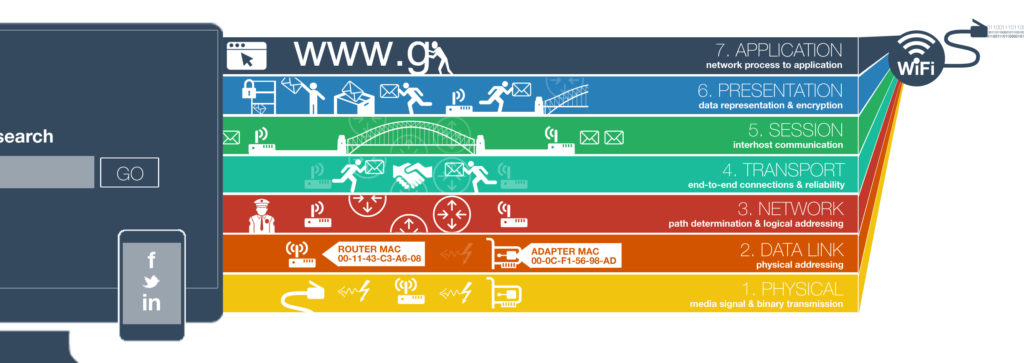Any explanation of computer networking generally begins with the seven layers of the Open Systems Interconnection (OSI) model. This reference model assists with the interoperability of communication systems by providing a standard set of protocols.
Back in the 1970’s, two international standard-setting bodies; the International Organization for Standardization (ISO) and the International Telegraph and Telephone Consultative Committee (CCIT), each created their own documents which defined similar networking models. In 1983, these two bodies merged their documents to form what we now know as the OSI.
The concept of dividing the functions required to transfer data across a network into separate, independent layers, each with its own set of responsibilities, was revolutionary. This separation of layers and packet switching were the fundamental concepts that helped create the Internet as we know it.
Packet switching brought efficiency and layering brought the flexibility needed to transform a simple research network into one of unparalleled global reach and seamlessly connect multiple types of networks such as Ethernet, ATM, satellite, and wireless, without the need to change the fundamentals of how these networks operated.
One of the reasons TCP/IP was created was to replace the original experimental NCP networking protocols. TCP/IP made it possible to interconnect the ARPA funded predecessor of the Internet known as ARPANET with a satellite-based network. The NCP networking protocol was intertwined with the physical data transmission process and could not be used with new network types without replacing the protocols on every computer. Separate, independent layers meant that new types of physical networks could be connected easily. Routers could be provisioned with more robust features, reliability mechanisms could accommodate the size of an expanding network, and new applications like HTTP could operate with standardized interfaces, all without the need to change any other part of the network.
The OSI model has become a part of the language of networking and protocols are usually defined by their layer within the OSI. Load balancing vendors describe their products as Layer 4 switches or Layer 5/6/7 switches. This makes for a convenient shorthand in describing network concepts. While the OSI makes things a lot less confusing, modern networking, especially TCP/IP, doesn’t neatly fit into its perfect little world of layers. Regardless, the model is still an essential element in properly understanding the concept of computer networking.












